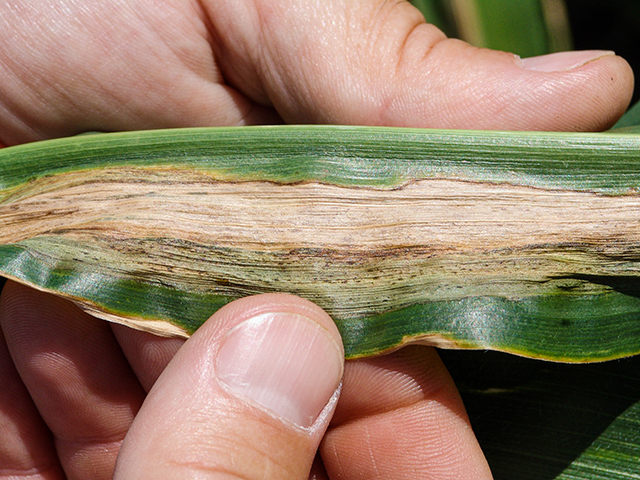Croplink
Choose Corn Hybrids Wisely To Ward Off Goss's Wilt
Farmers will soon be selecting corn hybrids to grow next season. To protect against Goss's bacterial wilt and leaf blight, one of the most damaging diseases to corn, choosing resistant varieties is still the best option.
"In part, this is the easier method because scientists don't yet know much about Goss's wilt," according to a recent article published by the University of Illinois College of Agricultural, Consumer and Environmental Sciences.
P[L1] D[0x0] M[300x250] OOP[F] ADUNIT[] T[]
Alexander Mullens and Tiffany Jamann, plant pathologists in the university's department of crop sciences, are studying the mechanics of Goss's bacterial wilt and leaf blight to better understand the disease and bolster resistance. They genetically modified the pathogen so it would display green fluorescence, which makes it easier to see how the bacteria enter the plant and track how it moves.
"While the bacteria had previously been known to enter plants through wounds caused by wind or hail damage, we discovered that in the absence of damage, it enters the leaf through natural openings at the edge of the leaf," Mullens says. "Once in the plant, the bacteria are able to grow through the veins and exit the plant through natural pores in the leaf's surface."
In resistant varieties, the researchers found the bacteria aren't able to grow as far from the entry site. "We can use these tools to understand more about how different plant varieties restrict bacterial entry and growth," Jamann says.
**
-- Follow the latest from Matthew Wilde, Crops Editor, by visiting the Production Blogs at dtnpf.com or following him on Twitter @progressivwilde
[PF_1021]
(c) Copyright 2021 DTN, LLC. All rights reserved.




